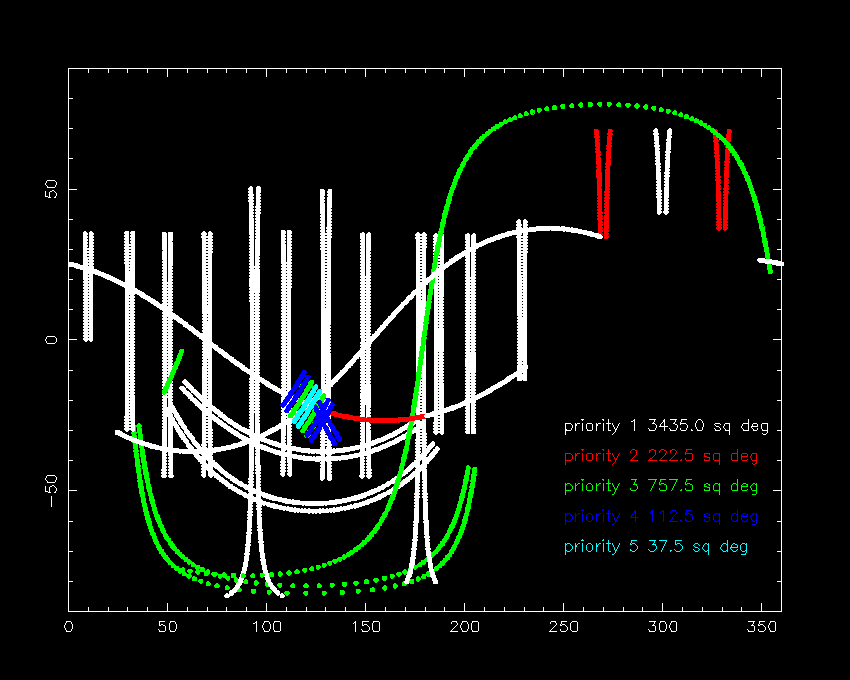
| SDSS Classic |
| SDSS.org |
| SDSS4.org |
| SDSS3.org |
| SDSS Data |
| DR19 |
| DR17 |
| DR10 |
| DR7 |
| Science |
| Press Releases |
| Education |
| Image Gallery |
| Legacy Survey |
| SEGUE |
| Supernova Survey |
| Collaboration |
| Publications |
| Contact Us |
| Search |

|
About |
For Scientists |
Publications |
Illustrative Spectra
|
SEGUE Imaging
The SEGUE imaging survey is designed to photometrically identify and trace all stellar components of the Milky Way Galaxy. The entire sky available from Apache Point Observatory will be sampled, with gaps of no more than about 10 degrees between observations at high Galactic latitude (|b| > 30 degrees), and no more than 20 degrees at low Galactic latitude (|b| < 30 degrees). This will ensure that all major structures, including the thin and thick disks, the stellar spheroid, and substructures within the Galactic halo, are adequately sampled. The SEGUE sky coverage map includes a detailed description of the plate layout and current observational status; the SEGUE footprint in l and b, color-coded by level of priority is shown below: 
SEGUE StripesThe SDSS telescope has a 3º diameter field of view and imaging is obtained using a drift scan camera with 30 2048 x 2048 CCDs at the focal plane, and five broad filters , ugriz, that cover a range from 3000 to 10,000Å. Each continuous scan constitutes an imaging run and generates a strip; two strips create a 2.5º wide imaging stripe. (See SDSS DR7 Sky Coverage for details.) A table of SEGUE stripes can be found at SEGUE Stripes. Low Latitude ImagingMany of these stripes go to quite low Galactic latitude, and some cross the Galactic plane. The photometric pipeline is not optimized for the crowded fields found at low latitude, and so caution must be used in these regions of high stellar density:
Photometric PipelineSEGUE imaging data is processed using the SDSS photometric pipeline. Details can be found on the DR7 algorithms web page. Proper motionsProper motions are estimated from comparison with USNO-B data, following the prescription of Munn et al. (AJ 127, 2004). These proper motions are utilized in selecting candidates for certain categories of the SEGUE target selection algorithm.
|
|